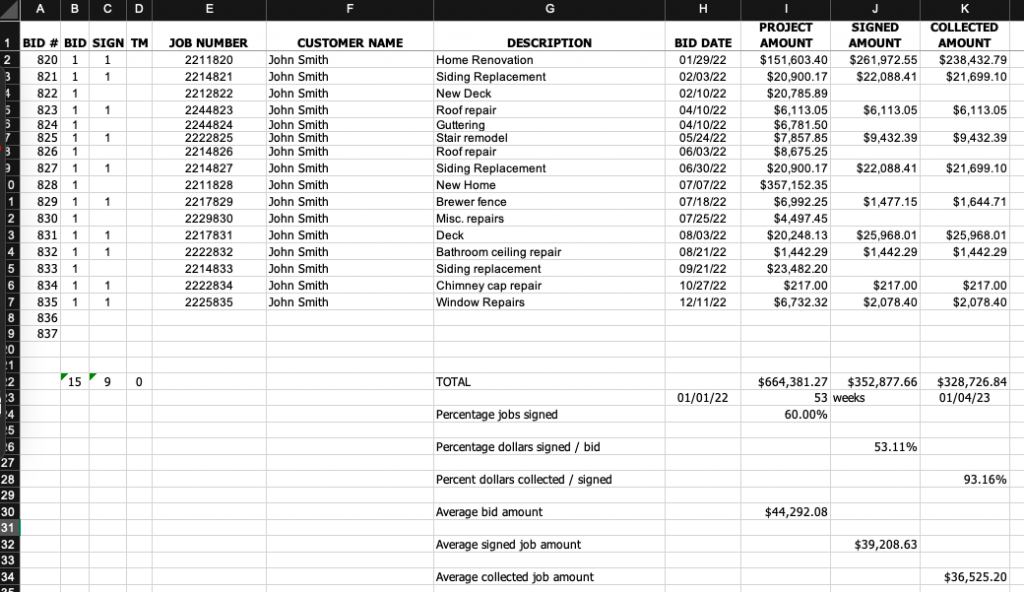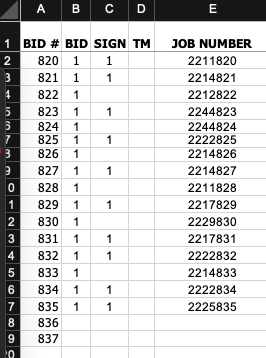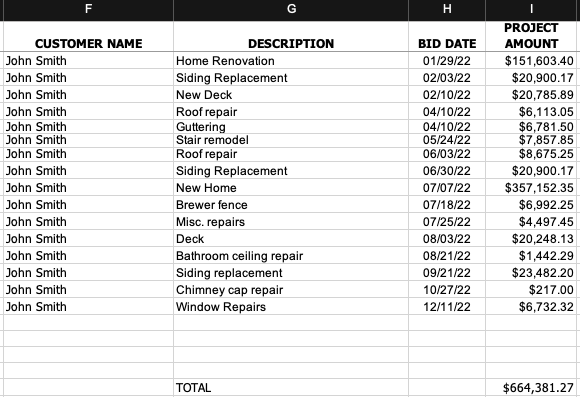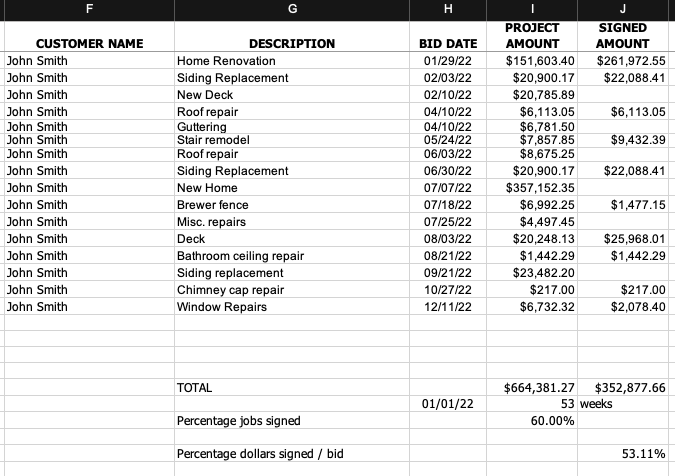Now, What’s the Purpose of This Building Block and Why Does it Matter?
Recently we discussed the importance of building your construction business on a solid foundation and how paperwork is outside of most contractor’s comfort zones. I know, I know paperwork is not a very exciting topic, but neither is concrete. And we all know how important concrete is in supporting a building. The same is true for paperwork and your business.

As we discussed previously, one of the three foundational piers is administration and finance. One of the building blocks in that pier is a Job List which offers valuable information for forecasting the company’s financial needs and production plans.
Wouldn’t it be helpful if you knew –
- Which types of work were consistently the most profitable
- How you were doing at meeting your financial goals for the year
- When you should have the signed projects finished to stay on track
- How well you’re doing at getting proposals signed
- What the average price of your projects are
The Job List is an Excel spreadsheet that lets you gather and track information. It has preset formulas determining and sorting the information you need to make your business more profitable.
This document provides information for –
- Creating and recording project numbers
- Tracking project bid amounts
- Tracking dollars of signed proposals
- Tracking dollars collected from projects
- Percentage of jobs signed
- Percentage of dollars signed per dollars bid
- Percentage of dollars collected per signed
- Average dollar amount of projects bid
- Average dollar amount of projects signed
- Average dollar amount of projects collected
- Projected timeframe for doing signed projects
- Projected date work should be done
This list can seem overwhelming but doesn’t have to be.
Here is an example of what the Job List spreadsheet looks like.

Let’s go through the document and break it down into smaller bite size pieces.
Creating and recording project numbers – Having a numbering system can help you sort projects so that you can review which types and size of projects are the most profitable and what you do the most of. It may be that your most profitable ones are not the ones you do the most often. Having this type of information can help you to focus more of your attention on the right kinds of projects for you.

This Job List is a place to list project numbers in conjunction with the size and types of the projects as well as their chronological order. This document provides the numerical part of the project number specific to each project. The other portion of the project number is determined by job specific parameters not included on this document.
Tracking project bid amounts – Our Blueprint for Building a Better Proposal system provides the dollar amount for each project. Once a proposal has been finished, the information specific to that project is entered into the appropriate cells on the spreadsheet. This information includes Job Number (column E), the Customer Name (column F), Description (column G), Bid Date (column H) and the Project Amount (column I). Regardless of the system you use for preparing proposals, you should have a dollar amount that could be entered into this document.

As each new project amount is added in the project amount column, the total project amount at the bottom will update giving you a total dollar amount of the proposals you have done to this point in the year. Based on your company’s past history, this dollar amount should give you a clear picture of where you are in relationship to meeting your financial goals for the year. We will explain this further with the tracking dollars of signed projects.
Tracking dollars of signed proposals – Once a proposal has been accepted, the accepted dollar amount should be entered in the signed amount column. Initially this amount should be the same as the amount in the project amount column. Sometimes the dollar amounts of projects are changed due to change orders. This can be either an increase or decrease depending on the change order(s).

As each new proposal gets signed the dollar amount of the signed proposal should be entered into the correlating cell in the signed amount column. Just like in the project amount column, as each new amount is entered in the signed amount column, the total dollar amount at the bottom automatically updates giving you a total of work you currently must do.
With the total of the signed amount column and the total of the project amount columns, you should be able to get a clear picture of where you are financially in relation to where you want to be at year end.
Let’s say your goal for the year was to generate a gross revenue of $400,000.00. Using the example, you can see that as of December the 12th you were at $352,877.66. This is getting close, but not quite there. If you compare the signed amount to the project amount ($664,381.27) you will see that the signed amount is 53.11% of the project amount. Based on this percentage, to get the signed amount to $400,000.00, the project amount would need to be $754,000.00.

This kind of info is helpful when looking ahead to the future.
We’ve covered a lot here today. In our next post we’ll pick up at tracking dollars collected from projects.
I hope you’ve found this helpful. If you have questions, feel free to put them in the comments below and I will answer them.

